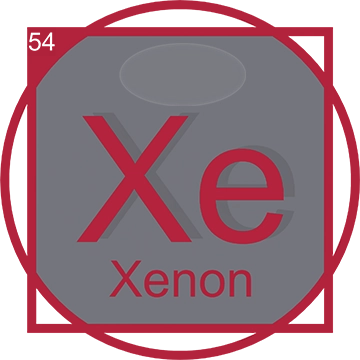Detailed Insights into Xenon (Xe): History, Properties, and Technological Uses
Xenon, symbol Xe, is a fascinating element in the noble gas group known for its rarity and unique chemical properties. This extensive article delves into the discovery of Xenon, its classification in the periodic table, and its wide-ranging applications across various fields including technology, medicine, and scientific research.
Discovery of Xenon

Xenon was discovered in 1898 by Scottish chemist Sir William Ramsay and English chemist Morris Travers in London. The discovery occurred while they were studying the residue left from evaporating components of liquid air, in a series of experiments that also led to the identification of other noble gases such as neon and krypton. Named for the Greek word 'xenos' which means stranger, Xenon was identified due to its strange, rare, and inert characteristics. This marked a significant milestone in the study of noble gases, contributing to our understanding of the atmosphere's components. The isolation of Xenon not only expanded the periodic table but also deepened scientific insight into the nature of gases and their interactions with other elements, paving the way for future innovations in lighting and medical imaging technologies.
Xenon in the Periodic Table
In the periodic table, Xenon is positioned among the noble gases with the atomic number 54. It is known for its complete outer shell of electrons, which explains its lack of chemical reactivity and colorless, odorless nature. Xenon, however, is unique among the noble gases because it can form compounds with other elements under specific conditions, despite its general inertness.
Physical and Chemical Properties of Xenon

Xenon is a heavy, colorless, and odorless noble gas. It exhibits a variety of interesting physical properties including a high density and high atomic weight. Chemically, Xenon is one of the noble gases that can form compounds such as xenon difluoride (XeF2) and xenon tetrafluoride (XeF4), primarily with highly electronegative elements like fluorine and oxygen.
Applications of Xenon in Technology
Xenon in Lighting

Xenon gas is extensively utilized in light-emitting devices, including flash lamps used in photography and high-intensity xenon arc lamps, which emit light that closely mimics natural sunlight. These specialized lamps are not only employed in movie projectors and automobile headlights but are also integral in various simulation environments where accurate sunlight replication is crucial. They offer superior brightness and a significantly longer lifespan than traditional incandescent bulbs, making them a preferred choice for applications demanding high-quality and durable lighting solutions.
Xenon Medical Imaging and Anesthesia

In the field of medicine, Xenon is utilized for its distinctive imaging capabilities. Due to its unique ability to be absorbed differently by various tissues, Xenon serves as an effective contrast agent in computed tomography (CT) imaging, especially for detailed imaging of the lungs and brain. This property enhances the clarity and contrast of CT scans, allowing for more precise diagnostics. Additionally, Xenon is valued in medical practice for its anesthetic and neuroprotective properties, making it a preferred choice for anesthesia in surgeries where brain protection is crucial.
Xenon Space Exploration

Due to its high atomic mass, Xenon is extensively utilized as a propellant in ion propulsion systems for spacecraft. These advanced propulsion systems are highly favored in the aerospace industry because they require significantly less fuel than traditional methods and provide greater efficiency, making them ideal for long-duration space missions. The use of Xenon in these systems allows for a steady, sustained thrust that extends the operational capabilities and mission durations of spacecraft exploring deep space. Additionally, Xenon-powered ion engines contribute to more precise navigational control, essential for the intricate maneuvers required in space exploration.
The Future of Xenon

Research into the applications of Xenon continues to evolve, particularly looking into its potential in environmental technology, where its properties could be used to study atmospheric changes or as a means to store energy efficiently. The ongoing exploration of Xenon's complex chemistry might unlock new technological and medical advancements.
This refined image showcases a futuristic starship, inspired by Star Trek designs, which is propelled by an advanced Xenon-powered ion propulsion system. The vibrant and dynamic glow from the propulsion system highlights the ship's cutting-edge technology, making it a standout against the vivid backdrop of a star-filled galaxy. Additionally, the ship is equipped with enhanced high-tech Xenon lighting systems, designed for scanning distant cosmic phenomena. These features not only emphasize the ship's utility in deep space exploration but also showcase its role in pioneering the next frontier of interstellar travel.












